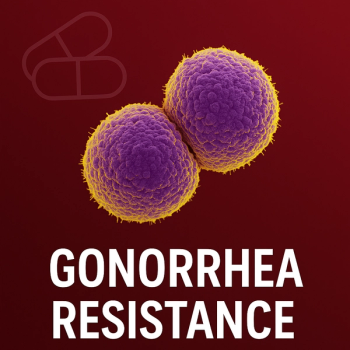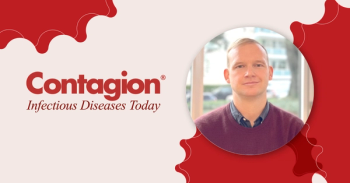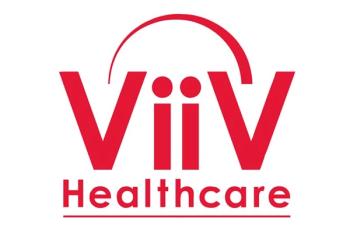
- August 2018
- Volume 3
- Issue 4
An Update to Antiretroviral Therapies for Pediatric Patients Living With HIV
Medication advancements offer more options and formulations for treating pediatric patients living with HIV.
The burden of pediatric HIV infection in the United States has decreased in the recent years. The number of patients 19 years and younger at their HIV diagnosis declined from 4250 in 2011 to 3813 in 2016.1 And among children who received the diagnosis when they were younger than 13 years, the number of perinatal infections fell to below 100 in the United States in 2016.1 This drop may be attributed to efforts focused on the prevention of HIV transmission from mother to child. Examples of such efforts include universal prenatal HIV screening, combination antiretroviral therapies (ARTs) to maximally suppress the maternal viral load, elective cesarean delivery, provision of neonatal antiretroviral (ARV) prophylaxis, and neonatal replacement feeding.2
In the current era of ART, treatment options are more potent but have fewer toxicities and better adverse effect profiles. Lower pill burdens and dosing frequencies and more combination drug formulations, including single-tablet regimen (STR) options, provide multiple options to complement patients’ preferences and lifestyles. Specifically, for pediatric patients who have difficulty swallowing pills, the availability of chewable formulations, such as chewable raltegravir (Isentress), provides patients a better chance of improved adherence to achieve viral suppression and preservation of immune function.
Selecting an ARV regimen for pediatric patients living with HIV follows the same principles as treating adolescents and adults living with HIV. An ARV regimen for a treatment-naïve patient typically includes 2 nucleoside reverse transcriptase inhibitors (NRTIs) plus another ARV agent, which can be either an integrase strand transfer inhibitor, a boosted protease inhibitor, or a non-nucleoside reverse transcriptase inhibitor.3,4 Other considerations include the presence of comorbidities, such as hepatitis B or C virus infection; resistance testing results; and potential for drug—drug interactions.3,4 Special considerations for pediatric patients include the child’s age and weight when determining appropriate dosing requirements; the palatability of the drug formulations, most commonly an issue with liquid ARVs; and the potential for long-term toxicities.3
When selecting a regimen for pediatric patients living with HIV, “Guidelines for the Use of Antiretroviral Agents in Pediatric HIV Infection,” which are updated regularly, should be consulted for the most up-to-date evidence-based recommendations.3 In May 2018, the guidelines were updated to increase the strength of the recommendations from moderate to strong to reflect new data that all children should receive ART, regardless of symptoms or CD4 count.
Baseline plasma viral load, CD4 count, resistance testing, complete blood count with differential, chemistries, lipid panel, urinalysis, and hepatitis B screening should be completed prior to ART initiation.3 Raltegravir plus 2 NRTIs is recommended for HIV treatment in infants at birth up until age 6 years. Other recommended regimens for children aged at least 3 to 6 years included atazanavir (Reyataz)/ritonavir (Norvir) plus 2 NRTIs or darunavir (Prezista)/ritonavir twice daily plus 2 NRTIs. In addition to raltegravir plus 2 NRTIs, for children older than 14 days up until 3 years, the guidelines recommend lopinavir/ritonavir and 2 NRTIs. For infants after birth to <14 days, the guidelines recommend raltegravir in combination with 2 NRTIs or nevirapine (Viramune) plus 2 NRTIs. For children 6 years to 12 years, the guidelines recommend a regimen of 2 NRTIs plus atazanavir/ritonavir or dolutegravir (Tivicay). For adolescents older than 12 years, if they have a sexual maturity rating (SMR) of 4 or 5, they can be treated according to the adult and adolescent guidelines. In adolescents older than 12 years with an SMR of 1 to 3, 2 NRTIs plus atazanavir/ritonavir, dolutegravir, darunavir/ritonavir, or elvitegravir/cobicistat (Tybost) can be used (Figure).
Preferred dual-NRTI regimens differ between age groups. For children from birth to <3 months, zidovudine (Retrovir) plus lamivudine (Epivir) or emtricitabine (Emtriva) is recommended. Abacavir (Ziagen) or zidovudine plus lamivudine or emtricitabine is recommended for children 3 to <6 years. For children >6 years with an SMR of 1 to 3, abacavir plus lamivudine or emtricitabine or emtricitabine/tenofovir alafenamide (Descovy) is recommended. Finally, for adolescents >12 years with an SMR of 4 or 5, the guidelines recommend referring to the adult and adolescent guidelines.3-4
The guidelines recommend once-daily regimens and STRs whenever feasible, especially in the current era of simplified regimen options.3 The Table outlines the pediatric age and weight requirements for using all US Food and Drug Administration—approved STRs. For pediatric patients who struggle with adherence due to pill swallowing difficulties, alternative formulations should be considered. Many recommended ARVs are also available as liquids: abacavir, lamivudine, emtricitabine, zidovudine, nevirapine, lopinavir/ritonavir, darunavir, and ritonavir. A limitation to liquid formulations, however, is their palatability. Volume is also a concern for pediatric patients in higher weight groups who require higher doses, which results in larger volumes. Other formulations are available as highlighted in the guidelines.3
The guidelines have updated the ritonavir section to include information about a new pediatric oral powder formulation that can be administered in 100-mg increments. This formulation can only be used for doses of 100 mg or greater, which is recommended in children weighing at least 30 kg when used with darunavir or in children weighing at least 15 kg when used with atazanavir capsules. The guidelines prefer the oral powder formulation of ritonavir over the oral solution for children who have difficulty swallowing because the powder does not contain propylene glycol or ethanol, which can cause a range of central nervous system, respiratory, cardiac, renal, and gastrointestinal toxicities in children.5
Other alternative formulations include efavirenz (Sustiva) capsules, which can be opened and sprinkled onto 1 to 2 teaspoons of age-appropriate soft foods for children who are unable to swallow capsules or tablets. Atazanavir and tenofovir disoproxil fumarate are also available in an oral powder formulation that can be mixed with 1 tablespoon of food. Raltegravir is also formulated as granules for oral suspension, which is recommended to be mixed with 10 mL of water. What may be most useful in transitioning from alternative formulations to swallowing tablets are chewable raltegravir tablets. These can be used in children weighing at least 11 kg. For all formulations of ARVs, refer to Appendix A in the guidelines.3 The guidelines also recommend pill-swallowing training, as it has been shown to improve adherence at 6 months post training.6
In the current era of HIV ART, there are more formulations available for pediatric patients living with HIV. With new drug developments, therapies are easier to take with fewer toxicities. One formulation that was not discussed in the current update to the guidelines is efavirenz/ lamivudine/tenofovir disoproxil fumarate (Symfi Lo), which contains a lower dose of efavirenz (400 mg). This formulation may be useful in patients who are CYP2B6 slow metabolizers but recommendations for use will be included with the next guideline update. With time, as STR formulations are being studied in pediatric patients, more options will become available that will help facilitate better adherence in pediatric patients living with HIV. Finally, when treating these patients, the Guidelines for the Use of Antiretroviral Agents in Pediatric HIV Infection, which are updated regularly, should be consulted.
Dr. Min is a clinical assistant professor with a specialty in HIV pharmacotherapy at Temple University School of Pharmacy in Philadelphia, Pennsylvania. She received a PharmD at the University of Maryland School of Pharmacy in Baltimore, Maryland, and completed a PGY-1 pharmacy practice residency at Penn Presbyterian Medical Center and a PGY-2 HIV ambulatory care/clinical pharmacogenetics residency at the University of Houston College of Pharmacy in Texas. She is an active member of the American Academy of HIV Medicine.
References:
- Diagnoses of HV infection in the United States and Dependent Areas, 2016. Centers for Disease Control and Prevention. HIV Surveillance Report, 2016; vol. 28. cdc.gov/hiv/library/reports/hiv-surveillance.html. Published November 2017. Accessed June 1, 2018.
- Nesheim S, Taylor A, Lampe MA, et al. A framework for elimination of perinatal transmission of HIV in the United States. Pediatrics. 2012;130:738-744. doi:10.1542/peds.2012-0194.
- Panel on Antiretroviral Therapy and Medical Management of Children Living with HIV. Guidelines for the Use of Antiretroviral Agents in Pediatric HIV Infection. aidsinfo.nih.gov/contentfiles/lvguidelines/pediatricguidelines.pdf. Accessed June 1, 2018.
- Panel on Antiretroviral Guidelines for Adults and Adolescents. Guidelines for the Use of Antiretroviral Agents in Adults and Adolescents Living with HIV. Department of Health and Human Services. aidsinfo.nih.gov/contentfiles/lvguidelines/AdultandAdolescentGL.pdf.
- Marek E and Kraft WK. Ethanol pharmacokinetics in neonates and infants. Curr Ther Res Clin Exp. 2014(76):90-97. doi:10.1016/j.curtheres.2014.09.002.
- Garvie PA, Lensing S, Rai SN. Efficacy of a pill-swallowing training intervention to improve antiretroviral medication adherence in pediatric patients with HIV/AIDS. Pediatrics. 2007;119(4):e893-899. doi:10.1542/peds.2006-1488.
Articles in this issue
over 7 years ago
Antibiograms for Optimizing Empiric Therapy: Use Them Wiselyover 7 years ago
Coffee, Donuts, and Antimicrobial Stewardshipover 7 years ago
FMT Proves to Be Effective and Acceptable Treatment for rCDIover 7 years ago
An Unexpected Meningitis CulpritNewsletter
Stay ahead of emerging infectious disease threats with expert insights and breaking research. Subscribe now to get updates delivered straight to your inbox.




























































































































































































































































































